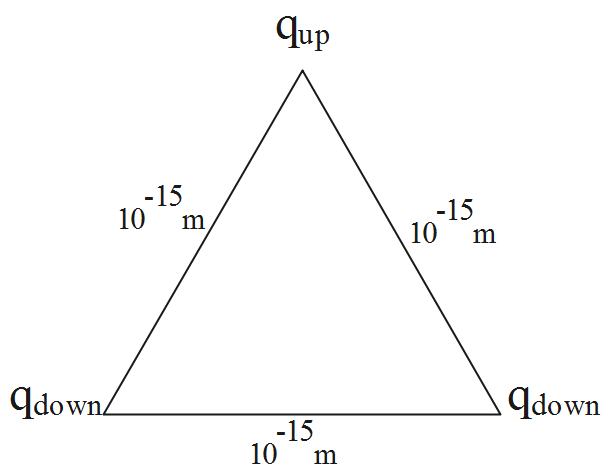Question
Question: In a quark model of elementary particles, a neutron is made of one up quark of charge\[\dfrac{2}{3}e...
In a quark model of elementary particles, a neutron is made of one up quark of charge32e and two down quark of charges(−31e). If they have a triangle configuration with a side length of the order of 10−15m. The electrostatic potential energy of the neutron in MeV is:
A. 7.68
B. -5.21
C. -0.48
D. 9.34
Solution
The potential energy of the given equilateral triangular system with 3 charges (the quarks are considered to be as the charges) can be obtained as the algebraic sum of the potential energies of each pair. Here, we get 3 pairs, 1 pair is down quark and down quark and the other 2 pairs are of up quark and down quark.
Complete step by step answer:
From the given information, we have the data as follows.
The total number of up quarks for neutron, 1
The total number of down quarks for neutron, 2
The charge on an up quark, 32e
The charge on a down quark, 31e
The distance between each quark, 10−15m
The quarks are arranged on the vertices of an equilateral triangle with a side of 10−15m. The potential energy between the 2 charges is given by the formula as follows.
U=4πε01rq1q2
Where q1,q2are the charges and r is the distance between them.
Consider the diagram representing the given information.

The potential energy of the given equilateral triangular system with 3 charges (the quarks are considered to be as the charges) can be obtained as the algebraic sum of the potential energies of each pair.
The formula representing the same is given as follows.
U=4πε01er[qdownqdown+qdownqup+qdownqup]
Substitute the values in the above formula.
U=10−15(9×109)(1.6×10−19)2[3−1(3−1)−32(31)−32(31)]
Continue further computation.
